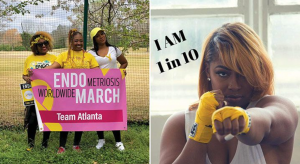
Nowadays volunteering is becoming increasingly popular, which also involves projects in health care. The reasons behind volunteering are varied, from taking social responsibility, through gathering new competences till religious motivations. Similarly, the actual impact on local communities is mixed. It was explained earlier which factors we must consider if we wish to help. The lack of adequate knowledge, cultural sensitivity, and a comprehensive understanding of socio-economic characteristics of communities, unfortunately, can easily cause more harm than good. While avoiding economic harm, personal damage and diminishment of confidence should be the main precondition, volunteering in health care settings often requires medical diploma. In the meantime, there is an increasing focus on global health disparities, such as access to healthcare, health literacy, unaffordability of treatments, and ageing population.
International organizations put a great emphasis on global health development, see Sustainable Development Goals, and community movements advocate for fair and equal health care. Through news, health campaigns, advertisement, art and cinema – not to mention the rapidly growing and transforming digital culture – we came across with different health inadequacies every day. Especially in the current health crisis, the pandemic showed to the whole globe that it can affect everyone regardless of race, gender, nationality or class. So, keeping in mind the complexities of today’s development agenda, how can we maintain our motive for action? How can we – as members of the public – participate in decreasing the global disease burden? Going to the global south is not the only way, community health volunteering can play a key role to raise awareness.
Digital divide could contribute to higher health disparities
As an example, broadband Internet access (BIA) is recognized as a social determinant of health due to its impact on how people access, learn and decode information. Nonetheless, offline as well as online health promotion is an effective tool for public health[1]. It goes beyond prevention and reducing the disease burden. It combines advocating for better public health policies, enhancing multisector community actions and building support groups by taking advantage of its relatively low cost, virtual participation and real-time communication, worldwide.
Global development cooperation and non-governmental organisations have been using social marketing in international health campaigns to raise awareness, pressure governments and invite members of the public to take action. Thanks to technological development, raising awareness stepped up to a new level. As an example, on World Cancer Day 2020 nearly 1,000 events took place in 113 countries and 65 governments got engaged. World Cancer Day also invites volunteers to translate campaign materials so the message can reach a global audience.
During history, diseases have always been surrounded by stigma
Nathalia Holk’s Ted Talk presentation also explains perfectly why it is so important to raise awareness in order to achieve better health outcomes. Stigmatization, as well as health-related taboos, are the consequences of lack of presentation, misinformation, and indoctrinated beliefs. Holk points out that we cannot change medicine until we change the way how we think and talk about diseases. Today, we talk more openly about cancer and mental health is considered as an integral part of general health.
Of course, there is still an enormous room for improvement and these achievements are not equally present in different parts of the world. For instance, the female reproductive system with its complexity often remains a taboo, be sat Period, Fertility, Premenstrual Syndrome (PMS), Human Papillomavirus (HPV) or Endometriosis. I will use the latter one to show the urgent need for raising awareness and demonstrate the potential of online activism.
Pain is never okay
However, the average time of diagnosing endometriosis is 7.5 years. Women often do not know that what they are experiencing every day it is not normal and they do not seek medical help. They find out only after years of suffering if they are lucky enough to receive good medical help, that their situation has nothing to do with their pain threshold. Rather, they were fighting with a chronic disease alone, without diagnosis or medical help. Living with endometriosis is varied, just like the women who are affected by endometriosis. For some, pain is unbearable and invading the management of everyday life, for some it comes with other diseases, like IBS or fibromyalgia. Some women have surgery, some women try hormone therapy and some women believe in alternative solutions. Stage 1, 2, 3 or. 4. There is one thing common, the tissues of the uterus are sticks to places (outside the uterus) where they should not be. Where exactly, how big the tissue is and how big the trouble is particular. If it is not treated, it can cause infertility or be a life-threatening condition.
1 woman out 10 has endometriosis. At the same time, considering here only my personal experience, probably 1 person out 10 knows what endometriosis is. While the situation in high-income countries (HICs) is far from satisfying, it is even more shocking in low-income countries (LICs). The belief that endometriosis affects more women living in HIC (explained by socio-cultural differences) has only started changing in recent years. A study found that in Nigeria among 239 women analysed, 115 (48.1%) had endometriotic lesions[2]. Another study also emphasised the necessity for a closer look, as African women suffer from this condition as much as women in the Global North[3].
Even though science advances, inclusive health care will not forward, unless we talk about it. It was explored how endometriosis is narrated on a shared activist Instagram account, where five women share their experiences of living with this chronic disease. It draws upon online contemporary illness narratives when tellers demonstrate awareness and position themselves as moral and knowledgeable endometriosis patients. In this case, being ill becomes available to wider audiences through ordinary people’s meaning-making. Through social media, the illness narrative forms co-tellership.
The increased visibility of illnesses can serve as a basis for activism and mobilize political and social awareness[4].
Thus, personal experiences are tied to larger stories and understandings of health. Since the discussion has an online presence, it creates new spaces for sharing experiences and invite for an understanding of the reality behind the disease. Self-portraits, memes, images, or paintings can be seen as volunteer activism with the objective to raise awareness, motivate or fight for better diagnosis. Limitation of computer-mediated communications should not be ignored, and we should carefully recognize the responsibility of posting any health-related content. Yet, with its openness and inclusivity, raising awareness in the digital era presents valuable opportunities.
References and further readings:
[1] Kubheka BZ, Carter V, Mwaura J. Social media health promotion in South Africa: Opportunities and challenges. African Journal of Primary Health Care & Family Medicine. 2020;12(1): e1-e7.
[2] Fawole AO, Bello FA, Ogunbode O, et al. Endometriosis and associated symptoms among Nigerian women. Int J Gynaecol Obstet. 2015;130(2): 190-194.
[3] Annan JJK, Larsen-Reindorf RE, Frimpong GA, Owusu-Afriyie O. Endometriosis: An “Unexplored”, “Neglected” or “Forgotten” Condition in Africa? Open Journal of Obstetrics and Gynecology. 2019;09(01): 29-41.
[4] Stage, Carsten. Networked Cancer. Affect, Narrative and Measurement. Palgrave/Springe; 2017.
Melander I. Multimodel Illness Narratives on Instagram. Sharing the Experience of Endometriosis. Diegesis. 2019;8(2).
Water J. A cycle of pain. Community Practitioner. 2020;March-April.







